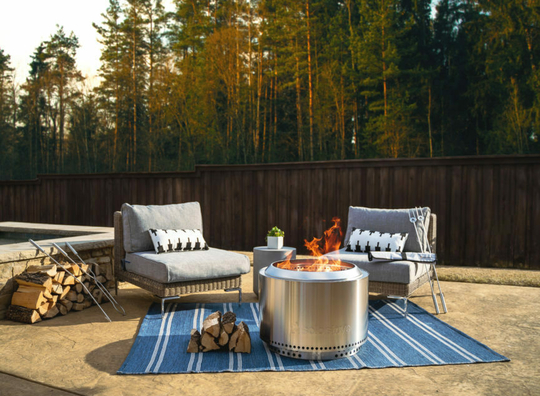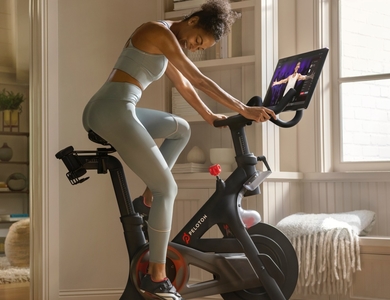
Future-Proofing Your Brand’s Data Strategy
Anti-trust legislation, regulation in the tech and social media space is Thanos. It’s inevitable. We’re finally at a point where the implications of data abuse are more visible and recognizable.
Read MoreIf you’re an obsessive Instagram scroller or an avid podcast listener, then you’ve probably seen or heard about Solo Stove. At first, the product seems a little strange: it’s a portable, stainless-steel fire pit that doesn’t produce very much smoke and burns wood down to easy-to-clean levels of ash. To make it even more of a hard sell, the entry-level Ranger model retails for around $250, which is more expensive than your average circle of rocks in the backyard.
And yet, since the beginning of the COVID-19 outbreak, Solo Stove’s sales have risen 300%. While this success certainly has something to do with changes in consumer habits during a pandemic, Solo Stove now owns about a 75% market share of the outdoor fireplace and fire pit category.
So how did this hard-to-explain product become a viral sensation?
The answer: influencer marketing. Here’s how they did it.

Key takeaway:
When it comes to creating a viral product, there is no replacement for a truly unique product.
No amount of marketing can replace a truly special product. Every viral product from the past few years, from the Exercise Dress from Outdoor Voices to the Play and Freeze Ice Cream Ball from hand2mind, features an innovative design or unique twist on something familiar.
Solo Stove certainly fits the bill. Before they came around, backyard fire pits fell into two categories: expensive propane options that burn clean but don’t offer the authentic and relaxing experience of an actual wood fire, or wood-burning fire pits the smoke of which might tick off your neighbors if you live in an urban or suburban setting. Solo Stove offers the best of both worlds: because of its innovative design, you can burn real wood without throwing off tons of smoke, and it’s also portable enough to put in the back of your truck and take it to a campsite, a beach, or just down the street to a backyard barbeque.
Key takeaway:
Find a target audience for your product and earn their trust.
Ideally, you already have a core audience in mind when you develop a product. And once the product is ready to market, don’t try to win over the entire world at first. Instead, focus on earning the trust of a narrow group of consumers that will serve as your brand’s core audience.
Solo Stove provides a useful case study. The brand’s first product was an ultra-light backpacking stove. It looks a lot like the alcohol or white gas–fueled stoves favored by long-distance hikers, but not only does the Lite model burn wood, eliminating the need to pack extra fuel or rely on wasteful, single-use canisters, but it also boils water in under ten minutes.
The success of this initial product earned the brand its core audience: outdoor enthusiasts. While this may seem like a relatively narrow audience, the brand was smart to understand that 1) positive reviews from hard-core backpackers would give the brand instant credibility with casual hikers and campers, and 2) outdoor enthusiasts who enjoy sitting by a fire in the wilderness probably also enjoy a campfire a little closer to home.
Focus on earning the trust of a narrow group of consumers that will serve as your brand’s core audience.
Key takeaway:
Spread the word organically before you pay for influencer content.
Members of the outdoor enthusiast audience love trying out and then reviewing new products online. There are thousands of blogs, magazines, social media accounts, YouTube pages, and e-commerce sites devoted to reviews of the latest camping, hiking, and RVing gear. Solo Stove introduced their product into an ideal ecosystem of organic, user-generated advertising and influencers.
The example of Solo Stove is a useful lesson for brands in other categories: before you shell out precious marketing dollars to paid influencers, leverage your owned and earned media. This means paying close attention to the management of your e-commerce site and social media, making sure that any negative feedback or issues are promptly dealt with. It also means reaching out to websites and consumers that regularly review products and providing them with free samples or testers.
Solo Stove also offers an affiliates program, which makes it easy for podcasts or websites relevant to their audience to run ads and earn a commission.
Key takeaway:
When your brand is ready to reach beyond its core audience, paid influencer content is a very effective marketing tool.
How did Solo Stove expand beyond the outdoor enthusiast audience? Paid influencer marketing isn’t the entire answer, but it’s certainly part of it. Take the case of Emily Fee. She is a mommy/family/DIY influencer and blogger, not exactly the sort of person you would expect Solo Stove to pay to review their products. However, influencers like Emily are exactly how brands expand beyond their core audiences.
Her blog post reviewing the Yukon fire pit and roasting sticks introduces the Solo Stove brand to a new audience of consumers: families with kids who want a safe and easy way to roast marshmallows over an open fire. This audience would probably not be swayed by an enthusiastic review of Solo Stove on Gear Junkie, but they might be swayed by an influencer whose less rustic lifestyle more closely resembles their own.
A page on Solo Stove’s website makes it easy for potential influencers to reach out to the brand and for the brand to vet potential partners. Many brands that are ready and willing to reach out to paid influencers might also want an experienced paid influencer marketing partner, like [B]RIGHT Brand Performance Group, to help them navigate this crucial step in their brand’s growth.
At [B]RIGHT, we use influencer marketing as a key ingredient in a holistic brand growth strategy. Our channel experts know how to maximize your existing audiences while also locating and then reaching the new audiences that will power your brand’s growth in the future. As we’ve seen with the example of Solo Stove, influencer marketing is an incredibly effective tool to reach those new audiences. It’s also an effective way to help introduce new products to your existing audiences, especially if those products are a leap to an adjacent category (Solo Stove now sells grills, for example).
[B]RIGHT can guide your brand’s influencer marketing as a full-service agency partner, or we can help maximize your existing influencer efforts by helping to identify new influencers, improving your reporting, or making sure your influencer content is being leveraged to its fullest potential across all channels.
What do you say? Ready to talk?

Anti-trust legislation, regulation in the tech and social media space is Thanos. It’s inevitable. We’re finally at a point where the implications of data abuse are more visible and recognizable.
Read More
iOS 14’s Impact on Marketing, Microsoft Saves Democracy, and We Demo Social Media’s Newest Darling App: Clubhouse.
Read More
Peloton knows its audience, so instead of wasting marketing dollars trying to capture the attention of consumers who won’t be as receptive to aspirational messaging they focus solely on their niche audience.
Read More